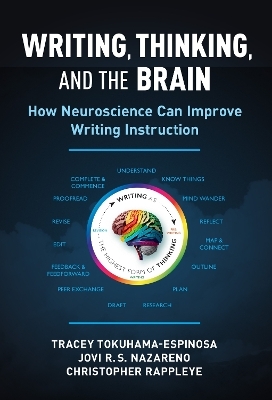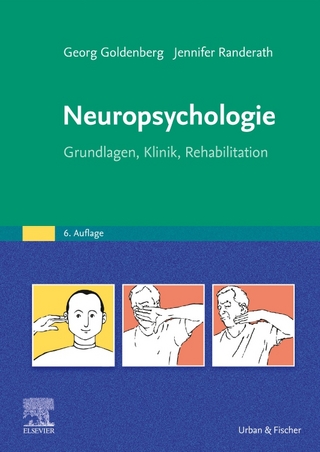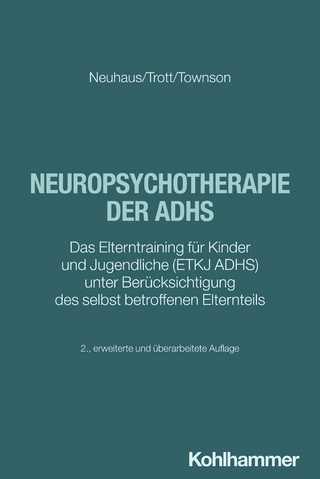
Writing, Thinking, and the Brain
Teachers' College Press (Verlag)
978-0-8077-8635-2 (ISBN)
Writing is the highest form of thinking, as evidenced by neuroimaging that shows how more neural networks are activated simultaneously during writing than during any other cognitive activity. This book will help teachers understand how the brain learns to write by unveiling 15 stages of thinking that underpin the writing process, along with targeted ways to stimulate them to maximize each individual’s writing potential. This one-of-a-kind resource is constructed on the premise that everyone has the potential to be a great writer. Many people learn to write in school settings according to a product-based structure in which they get feedback or a grade on an outline, draft, or final version of their work; few are coached on the many hours of thinking that go into that writing process. This book celebrates the invisible thinking behind the products, explains the brain’s way of making sense of writing assignments even in light of generative AI, and offers new tools to become a better writer and to assess the writing process. By exposing the invisible thinking behind the writing, Writing, Thinking, and the Brain helps both the teacher and the learner identify personal learning trajectories for better outcomes.
Book Features:
Spans all literary genres and all age groups and is complementary to any curriculum.
Builds on the firm foundation of writing practices of the past with insight from the learning sciences.
Practical and accessible examples and illustrations throughout.
Written in the voice of a supportive, knowledgeable colleague.
Linked directly to Mind, Brain, and Education goals.
Leverages Universal Design for Learning (UDL) principles.
Offers teacher activities at all 15 stages of thinking with guidelines to support student learning.
For additional resources, check out ThinkWriteMBE.com.
Tracey Tokuhama-Espinosa, PhD, is an instructor at the Harvard University Extension School, and Harvard College Summer School, the associate editor of Nature Partner Journal Science of Learning, and an international educational consultant. Jovi R. S. Nazareno, MEd, is a graduate of Harvard’s Mind, Brain, and Education program, and is a learning science and education outreach specialist at MIT Open Learning. Christopher Rappleye, MFA, is the Ethan A. H. Shepley '41 Chair of Distinguished Teaching in English and Composition and a leader in social-emotional learning at the Mary Institute and Saint Louis Country Day School in St. Louis, MO.
Contents
List of Figures and Tables vi
Acknowledgments viii
Introduction 1
Who Should Read This Book 1
How to Read This Book 3
1. A Story of Learning to Write 6
Think to Write, Write to Think 8
Lessons Learned 15
Why ThinkWrite? Why Now? 26
2. The Neuroscience of Writing 31
Learning Trajectories and Their Neural Networks 31
Holons: Parts and Whole 32
Four Categories of Neural Networks for Language 37
When Problems Occur, Diagnosis Is Half the Cure 46
The Holons of the ThinkWrite Model 49
3. The Holons of Prewriting 55
Understand 56
Know Things 62
Mind Wander 69
Reflect 75
Map and Connect 81
4. The Holons of Writing 86
Outline 87
Plan 93
Research 97
Draft 102
5. The Holons of Revision 108
Peer Exchange 110
Feedback and Feedforward 115
Edit 121
Revise 126
Proofread 130
Complete and Commence 134
6. Toggling to Assist Variability and Flexibility 140
Name It to Tame It 141
Familiarity, Repetition, and Practice 142
Student Choice 145
Toggling for Better Learning 146
The Brain Adapts to What It Does Most 150
Introducing ThinkWrite to Students 151
7. Tools for Coaching the Thinking Behind Writing 167
Coaching Students to Toggle 167
Valuing the Thinking as Much as the Writing 173
Writing is No Longer Just About Pencil and Paper: Embracing EdTech 187
8. Implementing ThinkWrite With Universal Design for Learning 189
What is Universal Design for Learning in Education? 189
Differentiation Through UDL 191
Why Do Students Vary in Their Starting Points as Writers? 192
Differentiating with ThinkWrite 193
Determining the Range of Learners 194
Determining the Scope of Activities 195
How ThinkWrite Responds to All Aspects of UDL Course Design 195
9. From Theory to Practice 198
Why ThinkWrite? 198
How to ThinkWrite (The Quick Guide) 199
Core Principles From the Learning Sciences and Their Implications for Instruction 200
The Bridge Between Our Current Practice and ThinkWrite 209
Practical Steps to Ground Writing Instruction in the Learning Sciences 211
Leverage Points to Change the System 215
The Holons of the Learner and Why AI Will Not Replace Good Writing Teachers 217
Generative AI (ChatGPT) 220
Nurturing Writers 221
Index 223
About the Authors 227
| Erscheinungsdatum | 29.10.2024 |
|---|---|
| Verlagsort | New York |
| Sprache | englisch |
| Maße | 184 x 260 mm |
| Themenwelt | Schulbuch / Wörterbuch ► Wörterbuch / Fremdsprachen |
| Geisteswissenschaften ► Psychologie ► Biopsychologie / Neurowissenschaften | |
| Geisteswissenschaften ► Sprach- / Literaturwissenschaft ► Literaturwissenschaft | |
| Geisteswissenschaften ► Sprach- / Literaturwissenschaft ► Sprachwissenschaft | |
| Sozialwissenschaften ► Pädagogik | |
| ISBN-10 | 0-8077-8635-7 / 0807786357 |
| ISBN-13 | 978-0-8077-8635-2 / 9780807786352 |
| Zustand | Neuware |
| Informationen gemäß Produktsicherheitsverordnung (GPSR) | |
| Haben Sie eine Frage zum Produkt? |
aus dem Bereich


